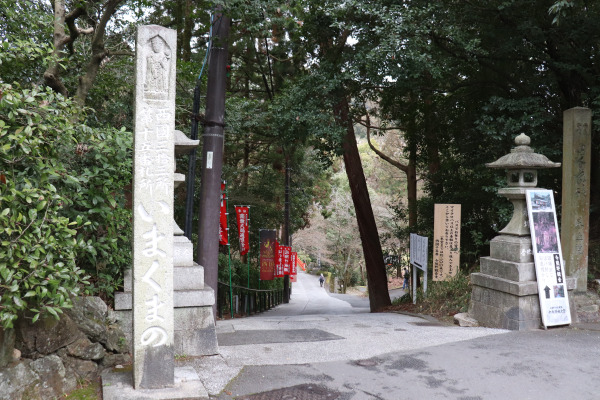Imakumano Kannon-ji, the temple that cures headaches
Right next to Sennnyu-ji temple, is the much smaller Imakumano Kannon-ji. Despite its mediocre size, this temple is actually one of the 33 temples of the Saigoku Kannon Pilgrimage and many people, especially those suffering from headaches, visit this temple.
Imakumano Kannon-ji
Imakumano Kanno-ji is right next to Sennyu-ji, but keep your eyes open because Imakumano Kannon-ji does not have a gate.
The origins of Imakumano Kannon-ji date back to the Heian Period.
According the temple legend, one day while Kukai was practicing Buddhism in To-ji, he saw an unusual group of purple clouds hovering over the mountain around here. Feeling drawn to the clouds, Kukai came to see what was happening.
Under the clouds, he found an old man with white hair. The old man told Kukai that he was the god of Kumano. He gave Kukai a statue of Kannon Bosatsu insisted that Kukai protect this place. Kukai did as the old man said and enshrined the Kannon state in a small hut that later became Imakumano Kannon-ji.


There is another famous story related to this temple.
One day Emperor Goshirakawa had a splitting headache, so he went to Imakumano Kannno-ji to pray for a cure. That night, Kannon appeared his dream and shone a light on his head. Then, his headache completely vanished! Due to this story, Imakumano Kannnon-ji renowned for curing headaches.
They even sell small pillow cases as souvenir, so if you or someone you know is plagued with migraines—who knows maybe it is worth a try?


Hondo
The hondo is supposedly erected on the site where Kukai met the god of Kumano. In the hondo does indeed a statue of Kannon Bosatsu, but it isn’t the same one Kukai divinely received. Instead, Kukai made another statue of Kannon and that statue is the one the hondo enshrines.

Just beyond the hondo, you will see the beautiful red pagoda on the hill. This pagoda is the Isei-do, and it enshrines many people who helped cultivate the medical field in Japan. Perhaps, because this temple has a reputation for curing headaches?




Leave a Reply